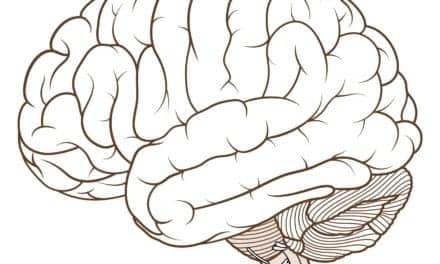New pharmaceuticals prescribed for inducing sleep have been found to be effective, safer, and better tolerated than previously

There are a number of advantages attributed to zaleplon that are not associated with other sleep-inducing medications. One of these is flexibility, based on the ability to adjust the timing of administration, on rapid onset of action, and on rapid clearance. Zaleplon should help patients fall asleep quickly, should reduce sleep latency, and, because of its rapid clearance, should allow patients to awaken naturally. When the manufacturer sponsored studies1 that compared zaleplon to placebo, it was found that the percentages of time spent in each stage of sleep by subjects were comparable to those seen in controls, and that, unlike many sleep medications, zaleplon does not increase total sleep time. With most other agents, patients must be warned to wait 7 to 8 hours after administration before engaging in activities such as driving. In clinical studies2 of zaleplon, there was no evidence of residual effects as soon as 4 hours after administration. This, in turn, allows flexibility in choosing the time of administration.
Zaleplon can be given almost whenever symptoms occur, whether at bedtime or after the patient experiences difficulty falling asleep. Zaleplon users must still be warned, however, that they should remain in bed for at least 4 hours after they take the drug.
Onset and Persistence
The rapidity with which zaleplon induces sleep is related to its short half-life (1 hour, compared with 1.4 to 4.5 hours for zolpidem). Patients taking zaleplon reported shorter sleep latencies than those taking a placebo. Sleep latencies averaged 30 minutes in the third and fourth weeks of a 4-week multicenter trial.2 The same study reported that sleep duration with zaleplon was approximately 6 hours.
Latency to persistent sleep (LPS) was also shortened with zaleplon (versus placebo). In a double-blind, 35-night sleep-laboratory study involving 137 subjects, polysomnographic recordings were used to assess the time that it took patients to obtain persistent sleep, defined as 10 consecutive minutes of staged sleep. LPS decreased from a baseline value of 44 minutes to 27 minutes after a week, and the decrease was sustained over the 5-week study period.
| Name | Duration | Dose | Residual Sedation |
| Flurazepam | long | 15 or 30 mg | high |
| Quazepam | long | 7.5 or 15 mg | high |
| Estazolam | intermediate | 0.5, 1, or 2 mg | medium |
| Temazepam | intermediate | 7.5, 15, or 30 mg | medium |
| Triazolam | short | 0.125 or 0.25 mg | low |
| Zolpidem | short | 5 or 10 mg | low |
| Zaleplon | ultrashort | 5 or 10 mg | very low |
| Table 1. Long- and short-acting agents for the treatment of insomnia. | |||
Next-Day Impairment
Following a night of sleep preceded by taking zaleplon (10 mg), 29 subjects were tested in the morning to determine their ability to drive an automobile, compared with the same ability in subjects who took a placebo and subjects who took the nonbenzodiazepine zopiclone (7.5 mg). Zopiclone, a cyclopyrrolone hypnotic agent, is not available in the United States. Driving ability was examined 5 and 10 hours following drug administration. Compared with placebo and zaleplon (which produced similar results), zopiclone was associated with significantly more impairment. In fact, subjects who had used zopiclone were more impaired than subjects who had been given alcohol to drink and who had achieved blood-alcohol levels of 1.22 mg/mL.3
Four hours following administration of either zaleplon or placebo, psychomotor functioning was identical in a group of 36 subjects. Using delayed word-recall tests, researchers also determined that there was no difference between the effects on memory of placebo and zaleplon 4 hours after administration.
Prescribing for Insomnia
Before prescribing zaleplon or any sleep-inducing drug, it is extremely important to rule out sleep apnea as a cause of sleeping problems and excessive daytime sleepiness. Patients who benefit from zaleplon include those with a confirmed diagnosis of primary insomnia (with no known underlying etiology) or secondary insomnia (substance induced, related to a psychiatric disorder, or due to a general medical condition). Treatment of insomnia in patients with primary or secondary concerns should be directed at those etiologies; their problems should not be masked by the use of any sleep-inducing medication.
Irrespective of its cause, insomnia is almost always associated with next-day consequences, including impaired ability to concentrate, impaired memory, decreased ability to perform usual daily tasks, and difficulties with interpersonal relationships. Any patient who complains of difficulty falling asleep, difficulty staying asleep, or tiredness after sleeping (nonrestorative sleep) should be evaluated to rule out sleep apnea, psychiatric problems, and other medical conditions such as pain. All of these can interfere with the ability to obtain restorative sleep. The impact of insomnia, which may, at one time or another, affect 50% of people,4,5 includes impaired cognitive function; negative effects on the quality of life; increased incidence of bodily pain and poorer general health; increased risk of psychiatric disorders, including a fourfold increase in new depression; decreased job performance, with increased absenteeism and tardiness; increased risk of accidents; and increased health care costs.6
Other Agents
Other agents that are sometimes prescribed (but often self-prescribed) for insomnia include antihistamines and other over-the-counter remedies. These preparations have side effects that may create problems. In addition, there are few or no data supporting their safety or efficacy. Mendelson and Caruso7 indicate that the anticholinergic properties of antihistamines can produce reductions in dexterity, memory, and concentration. Side effects of such medications include blurred vision, morning sedation, constipation, dizziness, tinnitus, and palpitations.
Conclusion
Although insomnia may be the result of sleep apnea and other underlying medical problems, it may also occur in response to personal and public events. The availability of medications that are ultra-short-acting, efficacious, and safe will help individuals restore their normal sleep patterns and daily lives.
Thomas M. Kilkenny, DO, FAASM, is medical director of the Sleep Apnea Center, Staten Island University Hospital, Staten Island, NY. Steve Grenard, RRT, is research coordinator at the center.
References
1. Full prescribing information, Sonata® (zaleplon) capsules. Available at: http://www.wyeth.com/content /ShowFile.asp?id=147. Accessed January 22, 2002.
2. Elie R, Ruther E, Farr I, Emilien G, Salinas E. Sleep latency is shortened during 4 weeks of treatment with zaleplon, a novel nonbenzodiazepine hypnotic. J Clin Psychiatry. 1999;60:536-544.
3. Vermeeren A, Danjou PE, O’Hanlon JF. Residual effects of evening and middle-of-the-night administration of zaleplon 10 and 20 mg on memory and actual driving performance. Human Psychopharmacology. 1998;13:S98-S107.
4. Walsh JK, Englehardt CL. Insomnia. In: National Commission on Sleep Disorders Research. Wake Up America: A National Sleep Alert. Washington, DC: US GPO; 1993:114-149.
5. National Sleep Foundation. Sleep in America. Princeton, NJ: Gallup; 1995.
6. Ford DE, Kamerow DB. Epidemiologic study of sleep disturbances and psychiatric disorders; an opportunity for prevention. JAMA. 1989;262:1479-1484.
7. Mendelson WB, Caruso C. Pharmacology in sleep medicine. In: Poceta JS, Mitler MM, eds. Sleep Disorders: Diagnosis and Treatment. Totowa, NJ: Humana; 1998:137-160.





